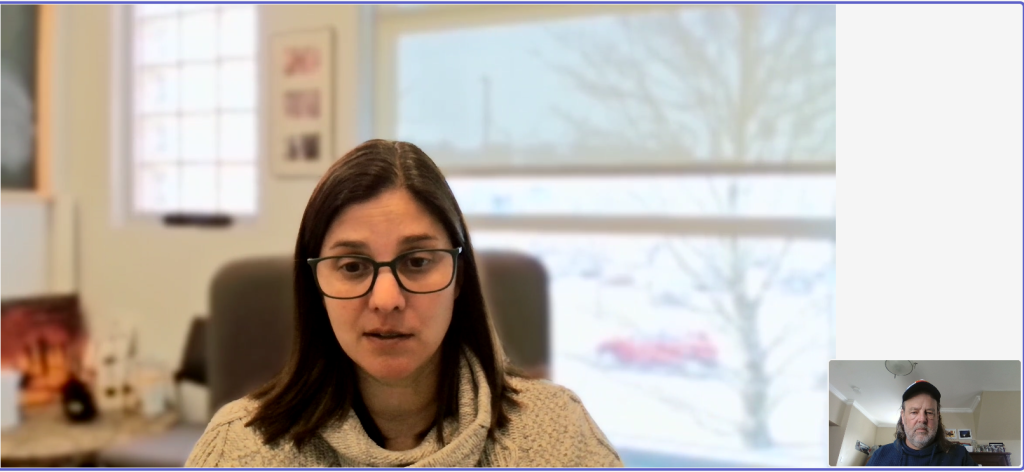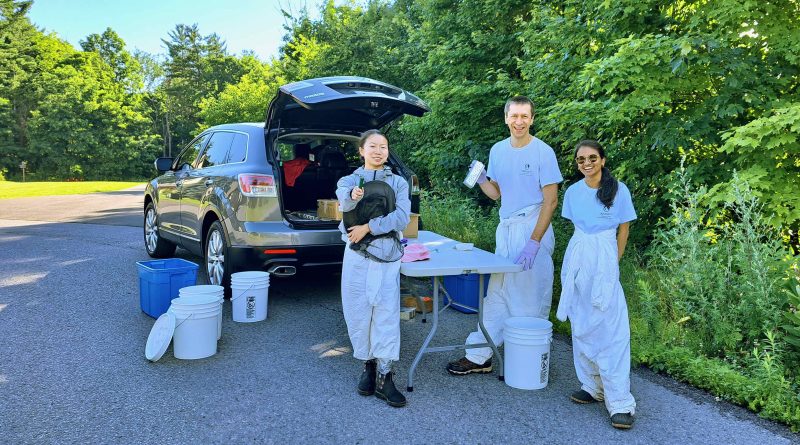UPTick returns to Carp for year five
By Jake Davies - West Carleton Online
CARP – The upcoming spring season is super for flowers. Unfortunately, around here it’s becoming pretty super for ticks as well.
University of Ottawa associate professor, medical entomologist and public health scientist Dr. Manisha Kulkarni who has been leading the Project UPTick project in the Carp area since 2020. Recently (April 10) sat down with West Carleton Online to talk about the upcoming tick season in West Carleton and things are not great, although it is a great time to talk about them.

“This is good timing with ticks starting to emerge from spring,” Kulkarni told West Carleton Online last week.
The UPTick project came to Carp in 2020, and is led by Kulkarni through the University of Ottawa’s School of Epidemiology and Public Health.
UPTick is a six-year study (Phase I 2019-23 and Phase II 2023-26) to enhance the understanding of how urban landscapes affect human risk from Lyme and other tick-borne diseases. The project conducts surveillance for tick-borne pathogens in ticks and small mammals at sites that represent different stages of urban development and connection to greenspace across the study areas.
Phase II of the study is taking place across five neighbourhoods in Ottawa, including Carp, Kanata North, Stonehaven, Findlay Creek and Blackburn Hamlet. In Phase I the project focused on western Ottawa neighbourhoods only (Carp, Stittsville, Kanata North, Stonehaven). Experiencing significant expansion of black-legged tick (Ixodes scapularis) populations, Ottawa was first declared an at-risk area for Lyme disease in 2017. During the past eight years, the UPTick team has identified environmental risk for Lyme disease in numerous areas of the city in close proximity to greenspace.
From May to October in each project year, the team collects samples, mostly through the live trapping of small mammals in three identifiable areas including woodland, woodland edge and urban centres. The researchers do an ear punch biopsy on those mammals they catch and sent the sample back to be tested.
This is the third year of Phase 2.
“We’ve been able to characterize patterns,” Kulkarni said. “We’ve found some interesting results.”
Both good news and bad news.
The research team has found no infected ticks in urban areas. But as soon as you hit the woodland edge the risk goes up. Infected ticks jumps 15 to 20 times higher in the woodland edge and another 20 times higher than that in the woodlands themselves.
“This is consistent with what we assumed,” Kulkarni said. “They’re not migrating in to the urban areas. They are on a lot of the woodland trails.”
Kulkarni says through their testing, one in three ticks are infected with Lyme disease.
“They’re well established along the walking trails,” Kulkarni said of ticks. “Walking dogs is a risk. We’re collecting hundreds of ticks in these neighbourhoods. If you’re walking a kilometre, for example, you’re encountering five to 10 ticks, which is significant.”
And one in three of those is carrying Lyme disease.
Kulkarni says ticks have been established in the northern U.S. since the ‘70s.
“Increasingly around upstate New York,” she said. “And they’re spreading north. Partly due to climate change. Migratory birds as well. If they fall off a bird and in an area where they can withstand the environment, they can establish a colony. We’ve seen a northward spread from Lake Ontario since 2012-2013.”
In 2016-2017, Kulkarni’s team started working with public health organizations on the tick issue.
“The Carp area has a good tick population established,” she said. “Up to Dunrobin and to the Ottawa River.”
In the past, our winters were cold enough and long enough to make are area fairly safe from ticks. But even if we got a number of winters in a row, similar to last year, it won’t change much.
“It will effect when they become active,” Kulkarni said. “They’re still there, happily under the snow cover and leaf litter.”
This year, Kulkarni expects the ticks to become active by the end of April.
“It’s just a matter of time,” she said. “Consistent winters aren’t going to change things at this point. We don’t expect to see them migrate out. It might fluctuate from year to year. We’re kind of at the leading edge right now.”
Kulkarni says even in Gatineau Park, they only find the occasional tick.
“We expect that will increase over time,” she said. “But there are not established populations.”
Kulkarni says if you find a tick, you can take a photo, go to the online platform etick.ca and submit the photo.
“Teams will identify the tick and send back information as well as put it on the map.
Since 2017, there have been 65,504 submitted ticks. Of that number, 51,986 were found on humans and 28,835 on animals. The rest were found in the environment.
“Almost half of that is in Ontario,” Kulkarni said.
Part of the UPTick project is to raise awareness of the dangers of ticks and that includes amongst health providers.
“It’s really important to diagnose early,” Kulkarni said.
For those who do find themselves in the West Carleton woodlands and trails, she advises people cover up, use insect repellant “and do tick checks when you get home.”
While adult ticks are a threat, nymph ticks, which are sort of the teenagers, come out in late June and July and are the biggest threat. They’re about the size of a poppy seed.
“They’re difficult to see and remove,” Kulkarni said. “They’re very closely linked to when we see human cases of Lyme disease in August.”
For those bit by ticks that carry Lyme disease, infection rates sit at about 30 per cent. Kulkarni wants West Carleton residents to be especially aware around the woodland edges.
“Because they are good habitats for mice and small mammals,” she said. “We want to highlight the risk of the woodland edge. People may not think of it.”
Kulkarni says the UPTick project will continue “Until the funding ends. This goes until March 2026.”
After that, the team will put together a “big report.”
“We’re still out there,” Kulkarni said. “And the ticks are definitely out there too.”
For information on tick bites and how to safely remove a tick, click here.












